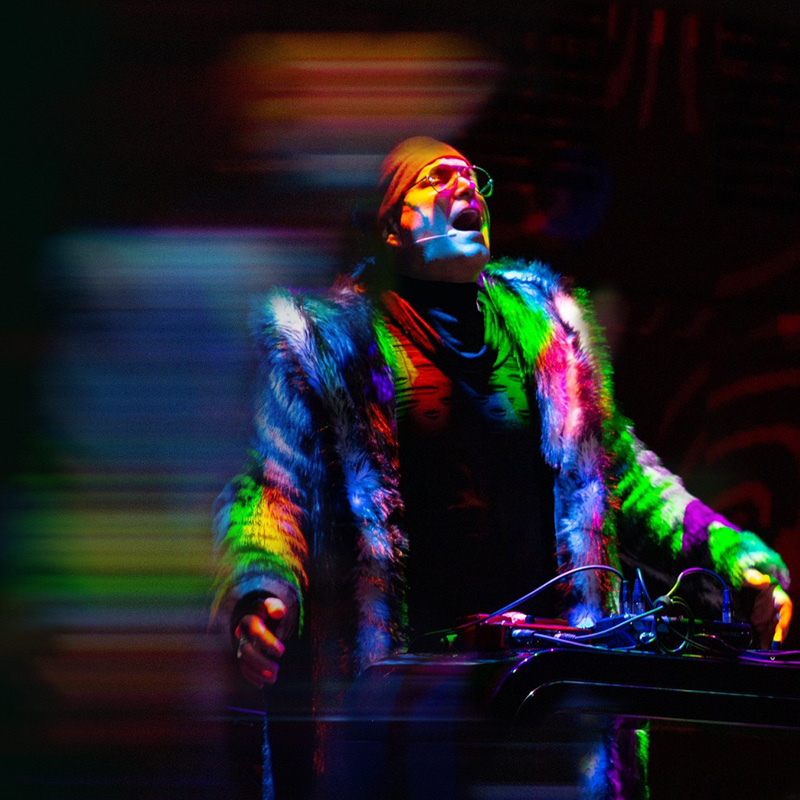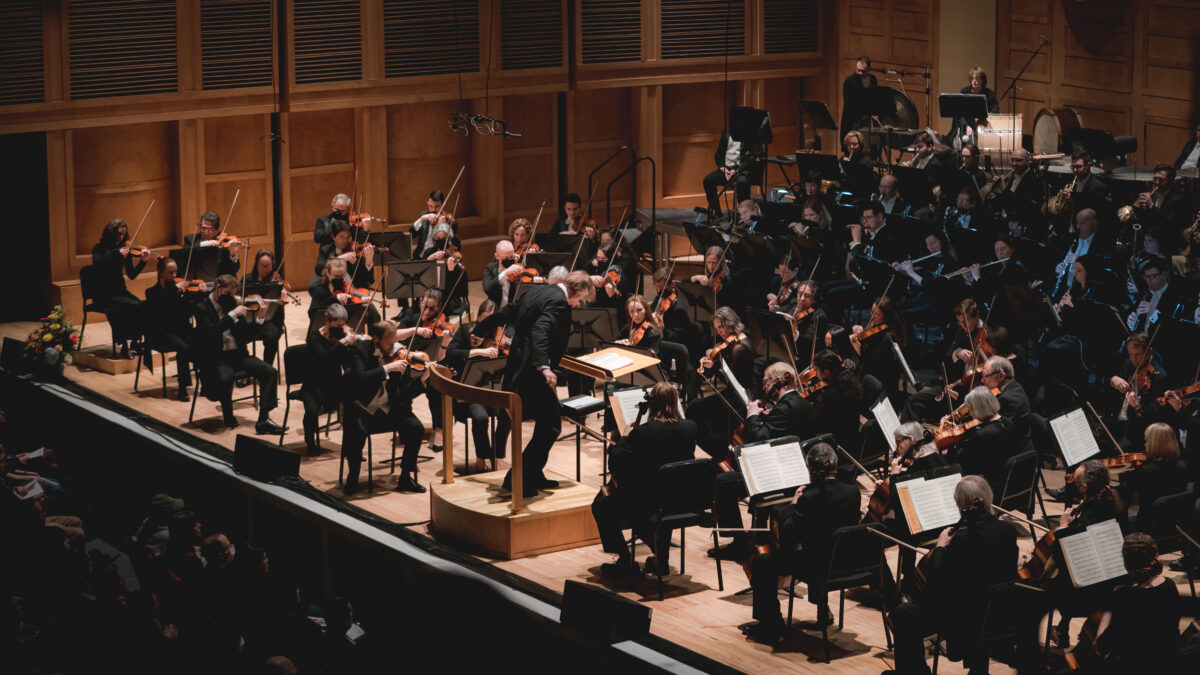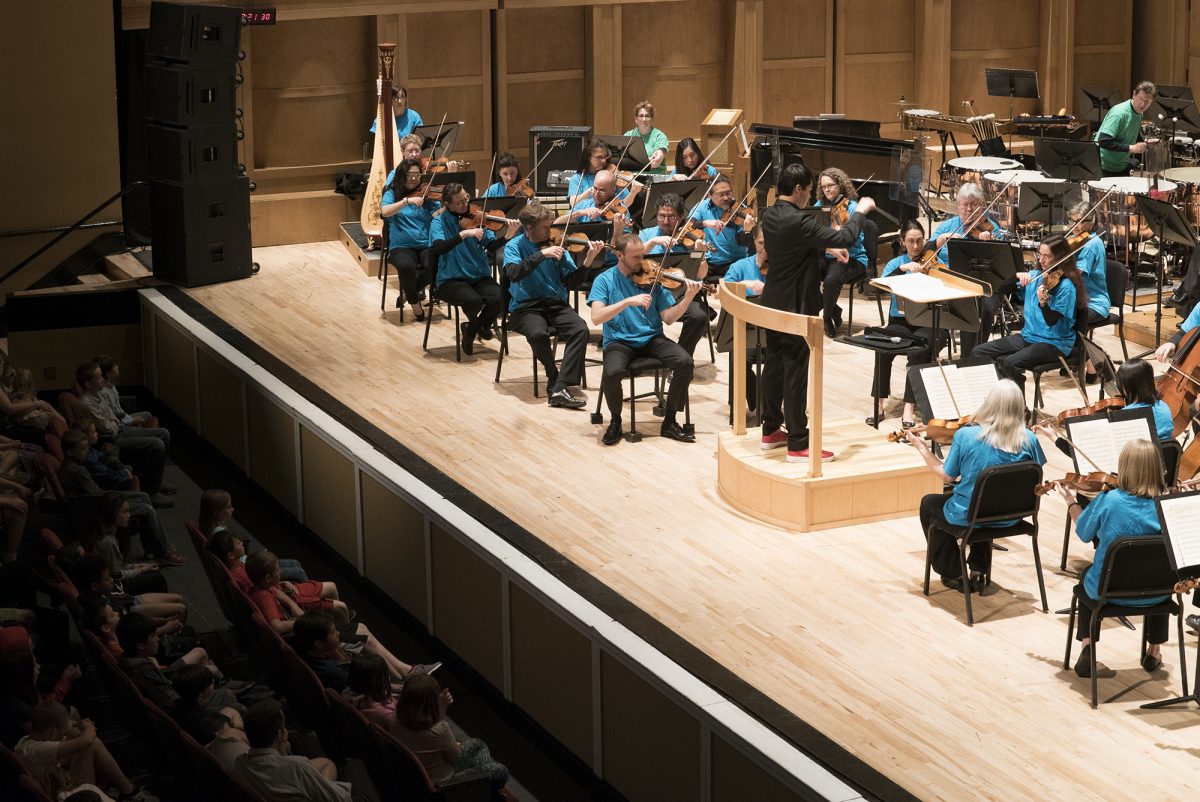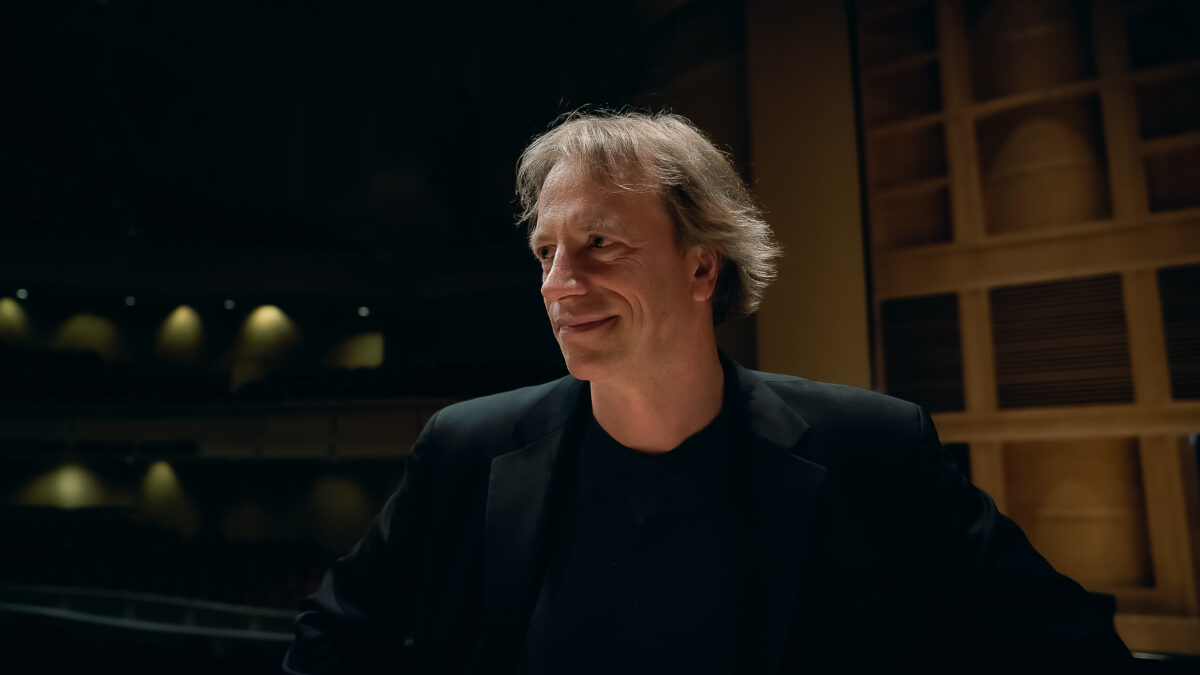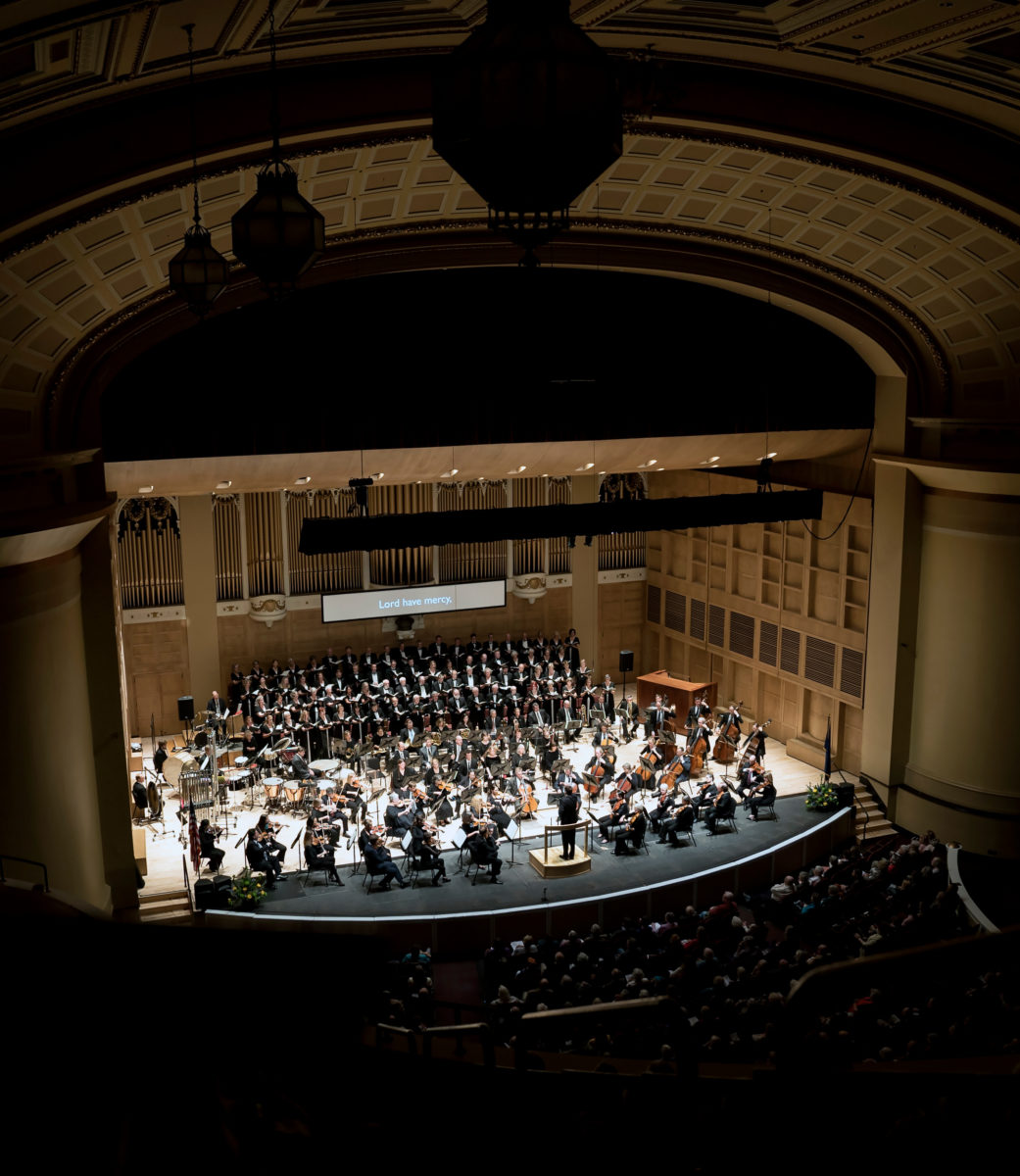Mendelssohn & Strauss Program Notes
Alberto Ginastera
Variaciones concertantes, Op. 23
Alberto Ginastera was born in 1916 in Buenos Aires, Argentina and died in 1983 in Geneva, Switzerland. He composed this work in 1953 on a commission from the Asociación Amigos de la Música in Buenos Aires, and it was first performed in that city the same year under the direction of Igor Markevitch. The score calls for 2 flutes, piccolo, oboe, 2 clarinets, bassoon, 2 horns, trumpet, trombone, timpani, harp, and strings.
*****
Though he was widely considered the greatest composer Argentina had ever produced, Alberto Ginastera had a hard time making a successful career in his homeland. This had less to do with his talent—which he had in abundance—and more to do with whatever government ruled his country at the moment. He was awarded a Guggenheim Fellowship in the late 1930s, but the military junta prevented him from studying in the U.S. until after World War II. He was named director of the national conservatory in 1948, but was fired by Juan Perón four years later; when Perón’s government fell Ginastera took on major posts at the Catholic University and the University of La Plata. He ultimately left Argentina in 1969 to settle in Geneva with his second wife. Despite this professional roller coaster ride Ginastera composed steadily, making a mark for himself in the world of music that transcended national boundaries.
Ginastera’s music and method of composition evolved throughout his career. His early works were very much inspired by folk music, while those he composed late in life were apt to contain all manner of modern techniques. His Variaciones concertantes falls somewhere between these two, but it shares one characteristic that is common to all his works: remarkable vitality.
Where his earlier works often quoted actual folk music, the Variaciones do not. “These variations have a subjective Argentine character,” he wrote. “I try to achieve an Argentine atmosphere with my own thematic and rhythmic elements. The work begins with an original theme followed by eleven variations, each one reflecting the distinctive character of the instrument featured. All the instruments of the orchestra are treated soloistically. Some variations belong to the decorative, ornamental, or elaborative type; others are written in the contemporary manner of metamorphosis, which consists of taking elements of the main theme and evolving new material from it.”
The twelve sections are played without pause. The Theme is for cello and harp; note how the harp plays the common open string pitches of the guitar, either in their original form (E-A-D-G-B-E) or transposed. After a string interlude, there are variations featuring flute, clarinet, viola, oboe and bassoon, trumpet and trombone, violin, and horn. After a second interlude by the wind section, the double bass reprises the theme and the full orchestra plays a final variation in the form of a rondo.
-Mark Rohr
********
Richard Strauss
Concerto for Horn & Orchestra No. 1 in E-flat major, Op. 11
Richard Strauss was born in Munich in 1864 and died in Garmisch, Germany in 1949. He completed this concerto in 1883 and it was first performed by Gustav Leinhos, horn, with the Meiningen Orchestra under the direction of Hans von Bülow, in 1885. The score calls for solo horn, 2 flutes, 2 oboes, 2 clarinets, 2 bassoons, 2 horns, 2 trumpets, timpani, and strings.
*****
Much becomes clear when it transpires that the composer of Ein Heldenleben and Til Eulenspiegel’s Merry Prankswas the son of a virtuoso horn player. Richard Strauss’ works show both a love for the instrument and a canny awareness of its capabilities. But what to make of his horn concertos?
They were composed 59 years apart, but they resemble each other more than they resemble his other works. Of course, a concerto is a concerto and Also Sprach Zarathustra is—well, you know what it is. One doesn’t expect to become a Superman (or merely climb the Alps) in a concerto, even a romantic one. Still, Strauss’ horn concertos aren’t nearly as romantic as we’d expect—they’re largely classical in form and style. They are polished, elegant—even Mozartean.
Franz Joseph Strauss, Richard’s father, was principal hornist of the Munich Court Orchestra for an astonishing 49 years. He not only had the power and stamina to perform the heroic horn parts of the day, but was considered by all to be a musician of consummate artistry and taste. He was also a bit of a terror: Richard described him as “vehement, irascible, tyrannical,” and more than a few conductors of the day would readily agree. At the same time, the elder Strauss held his son to the highest musical standards, for which Richard was grateful to his dying day.
Richard Strauss composed his First Horn Concerto at age nineteen. By that time he had years of experience accompanying his father as they read through horn music of all kinds. The incomparable concertos by Mozart were in their repertory, and doubtless made their impression on Strauss the younger. Richard was not yet the full-blooded romantic he was to become, and while no one would mistake this concerto for one of Mozart’s, one can recognize the shape of Mozart’s molds.
The Concerto’s first movement begins with a huge chord from the orchestra and the immediate entrance of the soloist with a bravura fanfare. The orchestral tutti is short, whereupon the horn returns with the graceful and lyrical second theme. From here things proceed in a suitably heroic fashion.
An artful transition brings on the second movement without pause. This music is somber and lyrical, with an accompaniment that reveals Strauss as a master of the orchestra at an impressively young age.
The Finale brings on the hunt with a rollicking 6/8, thoroughly spiced with sweet lyrical passages to set off the fanfares. There is no cadenza as such, but rather a place where the horn reiterates the movement’s themes with spaced chords from the orchestra. From there it’s a quick, cheerful gallop to the end.
-Mark Rohr
********
Felix Mendelssohn
Symphony No. 4 in A Major, Op. 90, Italian
Felix Mendelssohn was born in Hamburg in 1809 and died in Leipzig in 1847. He completed his Italian Symphony in 1833 and led the first performance with the Philharmonic Society in London the same year. He revised the work multiple times. The score calls for 2 flutes, 2 oboes, 2 clarinets, 2 bassoons, 2 horns, 2 trumpets, timpani, and strings.
*****
After five months in Italy the twenty-two year old Mendelssohn wrote home to his sisters: “The Italian Symphony is making great progress. It will be the jolliest piece I have ever done, especially the last movement. For the slow movement I have not yet found anything, and I think I will keep that for Naples.” The young man was clearly enjoying himself: “What I have been looking forward to all my life as the greatest happiness is now begun, and I am basking in it.”
Mendelssohn was on the grand tour of Europe, and everywhere he went brought exposure to the latest musical styles and ideas for his own compositions. Several works would take their inspiration from these travels (some not completed until years later), including the Hebrides Overture, the Scottish Symphony and the Italian Symphony.Mendelssohn wasn’t trying to paint sound-pictures in these works, cataloging the countryside in the notes, but left his listeners to hear in them what they will.
Despite his early enthusiasm, Mendelssohn was never satisfied with the symphony. After its London performance Mendelssohn revised it several times but never issued it in his lifetime. He thought that the formal design of the symphony was flawed; ironically, it is this very structural spontaneity that helps to make the work so delightful.
We can hear the composer’s cheerful first encounter with Italy in the dashing themes of the first movement. As he predicted in his letter, it was in Naples that the inspiration for his slow movement came. A religious procession he witnessed there inspired him to compose what some call a “Pilgrim’s March.” The image of monks chanting their litanies even extends down to the opening unison, which serves as the chant’s intonation. The third movement is flowing and lyrical, reminiscent of the now-passé minuet. Mendelssohn makes the last movement the symphony’s scherzo. This is a vivacious imitation of the Italian saltarello, whirling about like the dance that it is. By the end it has evolved into a wild tarantella.
Some sourpuss critics have had a hard time concealing their resentment of Mendelssohn; after all, he was born to wealth, was immensely talented at a very early age, wrote cheerful music, and seemed able to succeed without really trying. The less curmudgeonly among us can ignore such foolishness and gladly enjoy the sunny excursion Mendelssohn gave us in the Italian Symphony.
-Mark Rohr





